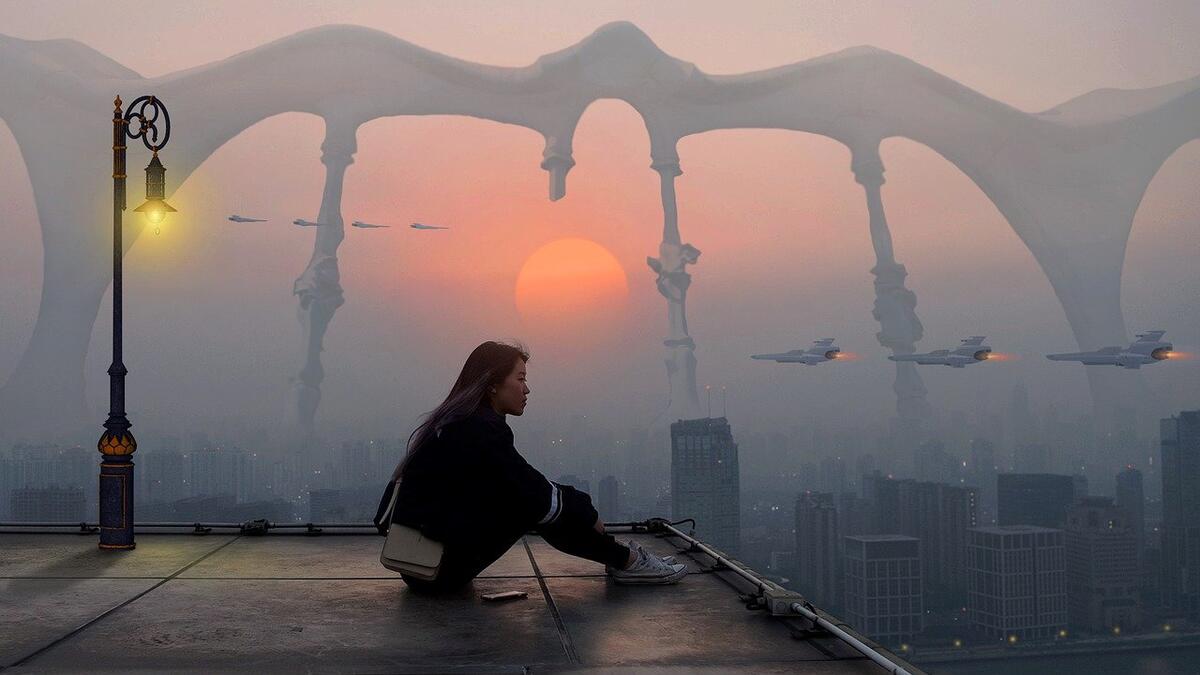Cities were changing before the pandemic. Big cities, like London and Mumbai, India, were becoming bigger. Coastal cities, like New York, Miami, and Venice, Italy, were armoring up against sea rise.
But after COVID-19 struck, something new happened. People fled cities for the suburbs and countryside. The capability to work remotely has been around for a few years, but now millions of people embrace it as their lifeline. Rents in the country’s most expensive cities, like New York and San Francisco, have dropped and vacancies have risen.
No one saw this coming.
What will cities look like in the future? That’s the idea behind "Urban Infrastructure: Reflections for 2100," a new anthology co-authored by Arizona State University engineer Mikhail Chester, an expert on preparing infrastructure for coming challenges.
What functions will cities serve? Who will live in them and why? Forty experts from around the world shared their reflections for cities in the year 2100 in a series of science fiction short stories, essays and poems. The goal of the book isn’t to make Alvin Toffler descriptions of the future. Instead, it is to provide a dialogue and visions of what we could hope for. Or fear.
“What does it mean for infrastructure to be agile and flexible in a world that's going to be, by every indication, increasingly chaotic?” Chester said. “What does it mean to do infrastructure differently? That's where I come in. … You’ve got infrastructure that have largely been developed with mental models that are rooted in the industrial era of stability of control. And that model is quickly going out the window.”
The theme of decentralization comes up in the book: Tesla is building its own charging stations for its electric cars. Is it still just a car company or is it an energy provider too?
ASU Now talked to Chester, an associate professor in the School of Sustainable Engineering and the Built Environment in the Ira A. Fulton Schools of Engineering and director of the Metis Center for Infrastructure and Sustainable Engineering.
Question: Were there any common themes that arose in the book about possible forms cities might take in the future?
Answer: The people were pretty colorful in terms of how they approached it, right? Some people put together board games or some people profiled citizens of the future. There were some common words, the ones that you would expect — sustainability, resilience, adaptation, transformation, stuff like that, that came up. But I don't think people zeroed in on a particular physical form. … We had a lot of colorful interpretations of a world that's changing fast and how cities and infrastructure need to be able to respond to that.
Q: Anything that surprised you, that came out unexpected?
A: The colorfulness of my colleagues. There were a lot of engineers that I thought were going to do a conventional kind of engineering description of how infrastructure needs to change. But what they instead did was take a step back and say, "What is it that our hopes are going to be? Our concerns are going to be? Our needs are going to be? The way that we consume services now, are those going to be the same in the future?" … So they took that step back and really thought about what that might mean.
Q: What will be the dominant forces shaping the future?
A: The dominant force will be change. It'll be how quickly infrastructure is able to respond to change. If it can't respond quickly, it'll become obsolete. If it can respond quickly, it'll have a chance. So, you know, that is antithetical to the way that we have been building for the past hundred years since the industrial era, which has been an emphasis on rigidity, which leads to things like armored (cities). But the future seems to be more and more marked by chaos in the sense of surprise, uncertainty, volatility, accelerating conditions — all of these things coming together create a landscape of unknown, right? Which sort of means surprise. And if we continue with these mental models, we can predict the future we're going to build ourselves into trouble. We're going to build ourselves into obsolescence.
I'm not saying that things will collapse and unravel, but our public services and infrastructure will not be able to keep up with what we need them to do. And that will probably lead to more and more other types of services inserting themselves and creating a very different landscape for how we have access to things. Case in point being Amazon, right now introducing drone delivery service. Why are they doing that? Is this simply because drones are cool, and they could fly it from a warehouse to your home? Sure. That's part of it. But also I think nested in that investment is the idea that they're building their own infrastructure, right? Their basic public infrastructure, as we know, is probably not going to be sufficient for what we need.
Top image: Image by Stefan Keller from Pixabay
More Science and technology

Breakthrough copper alloy achieves unprecedented high-temperature performance
A team of researchers from Arizona State University, the U.S. Army Research Laboratory, Lehigh University and Louisiana State University has developed a groundbreaking high-temperature copper alloy…

4 ASU researchers named senior members of the National Academy of Inventors
The National Academy of Inventors recently named four Arizona State University researchers as senior members to the prestigious organization.Professor Qiang Chen and associate professors Matthew…

Transforming Arizona’s highways for a smoother drive
Imagine you’re driving down a smooth stretch of road. Your tires have firm traction. There are no potholes you need to swerve to avoid. Your suspension feels responsive. You’re relaxed and focused on…


